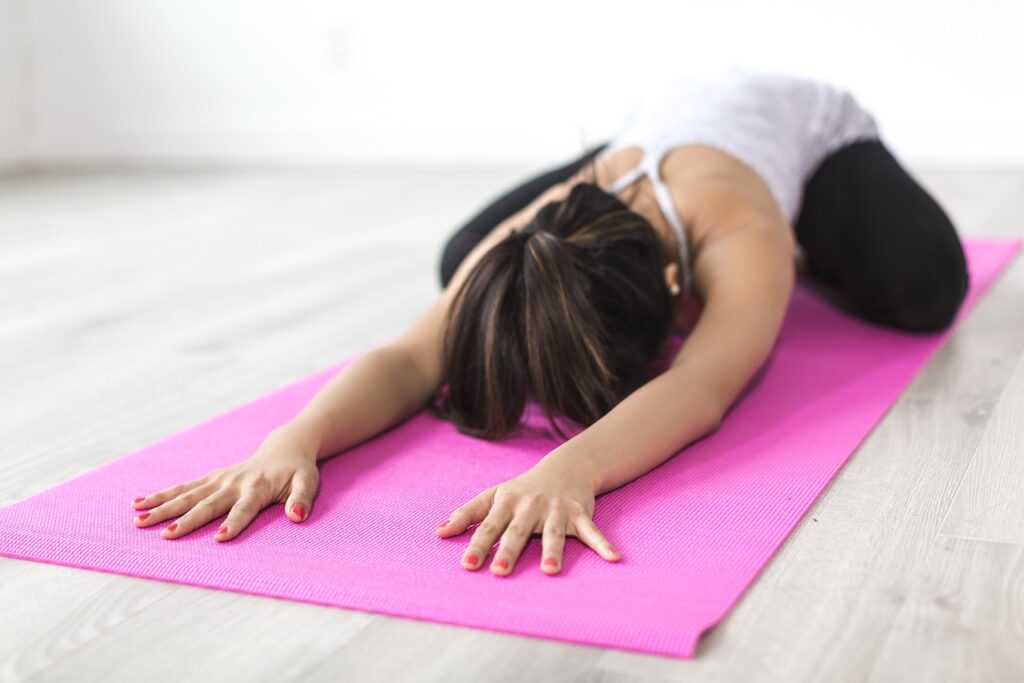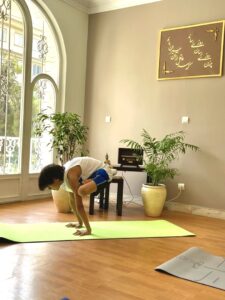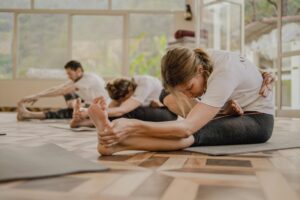
A restful night’s sleep is essential for maintaining physical health, emotional equilibrium, and overall well-being. Unfortunately, many people struggle with sleep disturbances due to stress, anxiety, or lifestyle choices. Yoga, with its focus on mindfulness, breath control, and physical postures, offers a natural and effective way to enhance sleep quality. This article explores various yoga poses specifically designed to promote relaxation and encourage restful sleep.
The Connection Between Yoga and Sleep
Yoga is an ancient practice that combines physical exercises, meditation, and breath control to achieve a state of harmony and balance. It is particularly effective in reducing stress, calming the nervous system, and promoting relaxation—all essential components for a good night’s sleep. By incorporating specific yoga poses into your evening routine, you can prepare your body and mind for rest, enabling you to fall asleep faster and enjoy deeper, more restorative sleep.
Tips for Practicing Yoga for Sleep
- **Create a Calm Environment**: Practice in a quiet, dimly lit space to signal to your body that it’s time to wind down.
- **Focus on Your Breath**: Deep, slow breathing activates the parasympathetic nervous system, promoting relaxation.
- **Be Consistent**: Establish a regular evening yoga routine to train your body and mind to transition into sleep mode.
- **Listen to Your Body**: Choose poses that feel comfortable and relaxing, and avoid any strenuous movements.
- **Use Props if Needed**: Blocks, bolsters, and blankets can enhance comfort and support during your practice.
Yoga Poses to Enhance Sleep
1. Child’s Pose (Balasana)
Child’s Pose is a gentle resting position that calms the mind and relieves tension in the body.
- **How to Practice**:
- Begin on your hands and knees, with your big toes touching and knees spread apart.
- Sit back onto your heels and stretch your arms forward, resting your forehead on the mat.
- Breathe deeply and hold for 1-3 minutes.
- **Benefits**: This pose stretches the lower back, hips, and thighs, while promoting a sense of security and calmness.
2. Legs Up the Wall (Viparita Karani)
Legs Up the Wall is a restorative pose that encourages circulation and relieves tired legs and feet.
- **How to Practice**:
- Sit close to a wall and lie back, swinging your legs up to rest against the wall.
- Keep your arms relaxed at your sides, palms facing up.
- Close your eyes and breathe deeply, holding for 5-10 minutes.
- **Benefits**: This pose helps reduce swelling in the legs, decreases anxiety, and induces a meditative state.
3. Reclining Bound Angle Pose (Supta Baddha Konasana)
This pose opens the hips and chest, promoting deep relaxation and stress relief.
- **How to Practice**:
- Lie on your back and bring the soles of your feet together, allowing your knees to fall open.
- Use pillows or blocks under your knees for support if needed.
- Rest your hands on your belly or by your sides and breathe deeply for 5-10 minutes.
- **Benefits**: It enhances relaxation, reduces heart rate, and soothes the mind.
4. Cat-Cow Stretch (Marjaryasana-Bitilasana)
The Cat-Cow Stretch is a gentle flow that increases flexibility in the spine and relieves tension.
- **How to Practice**:
- Start on your hands and knees in a tabletop position.
- Inhale as you arch your back, letting your belly drop (Cow Pose), and exhale as you round your spine (Cat Pose).
- Continue flowing with your breath for 1-2 minutes.
- **Benefits**: This dynamic stretch releases tension in the back, neck, and shoulders, facilitating relaxation.
5. Standing Forward Bend (Uttanasana)
This forward bend helps to calm the mind and relieve stress while gently stretching the back and legs.
- **How to Practice**:
- Stand with feet hip-width apart, bend your knees slightly, and fold forward from your hips.
- Let your head hang heavy, and if comfortable, clasp opposite elbows.
- Hold the pose for 1-2 minutes, breathing deeply.
- **Benefits**: Encourages blood flow to the brain, reduces anxiety, and alleviates insomnia.
6. Supine Spinal Twist (Supta Matsyendrasana)
A gentle twist that massages the internal organs and relaxes the lower back.
- **How to Practice**:
- Lie on your back and draw your knees into your chest.
- Extend your arms out to the sides and let your knees drop to one side while turning your head to the opposite side.
- Hold for 1-2 minutes and repeat on the other side.
- **Benefits**: Releases tension in the spine, aids in digestion, and calms the nervous system.
7. Corpse Pose (Savasana)
The ultimate relaxation pose that integrates the benefits of your yoga practice and prepares your body for sleep.
- **How to Practice**:
- Lie flat on your back with your legs slightly apart and arms at your sides, palms facing up.
- Close your eyes and focus on your breath, allowing your body to fully relax.
- Remain in this pose for 5-10 minutes.
- **Benefits**: Promotes complete relaxation, reduces stress, and helps transition into a sleep state.
Incorporating Yoga into Your Evening Routine
To maximize the benefits of yoga for sleep, consider incorporating it into your evening routine. Start with a short session of 15-30 minutes, gradually increasing the duration as you become more comfortable with the practice. You might also combine yoga with other relaxation techniques, such as meditation or deep breathing exercises, to enhance the calming effects.
The Importance of Breathwork
Breathwork is a key component of yoga that significantly impacts sleep quality. Practicing slow, deep breathing can shift your nervous system from a state of fight-or-flight to rest-and-digest. Techniques like diaphragmatic breathing, alternate nostril breathing (Nadi Shodhana), and the 4-7-8 breathing method can be highly effective in promoting relaxation and preparing your body for sleep.
Conclusion
Yoga offers a natural, holistic approach to improving sleep quality by calming the mind, relaxing the body, and reducing stress. By incorporating yoga poses and breathwork into your evening routine, you can create a peaceful transition to bedtime, ensuring a more restful and rejuvenating sleep. Remember to be patient and consistent with your practice, and over time, you will likely notice significant improvements in your sleep patterns and overall well-being.
“`
#ChatGPT assisted in the creation of this article.





